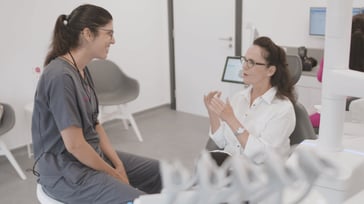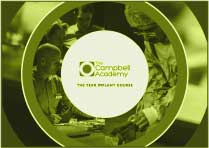A short series on getting started in implant dentistry: Part 4 - Restorative


As part of this little blog series on starting out in implant dentistry, I wanted to focus part four on the restorative aspect of implant dentistry, at least at the straightforward level.
As with all disciplines in dentistry, implant dentistry is divided into straightforward, advanced and complex categories or some definition thereof.
Straightforward implant restorative dentistry can be pretty straightforward if it's carried out where implants are placed mostly in the correct position by people who have some idea of what they're doing in cases that are well selected.
Restorative aspects of implant dentistry are, in fact, the part where many people start their careers in implant dentistry.
Finding a straightforward, restorative dentistry introduction course is relatively easy and simple. If you're working with someone you can trust who can be 'your surgeon', you can look for patients who could benefit from this treatment and work collaboratively with someone else in a way you've not done before.
It allows you to gain confidence in implant dentistry in patient selection, discussing the overall treatment options and a start-out in straightforward reconstruction.
It's even possible to do straightforward restorative training online with hands-on elements, which makes it very accessible for busy general dental practitioners who are deciding to dip their toes into this level.
The same rules apply for selecting providers for this and support because you'll always need support from implant companies, laboratories, and people in this discipline.
Once you've considered and thought about that, you can move forward with accessing training in this area, which can be a brilliant add-on to the treatment that you already provide for patients.
It always feels better for the dentist and the patient if you can provide the treatment yourself. Patients feel much happier to remain in their own practices (at least for part of their care), and you can then give them the confidence that they are being treated by someone they know and have built a relationship with over time.
In truth, single units or even three-unit restorations on implant dentistry, which are screw-retained, are relatively simple to provide for patients for a caring and conscientious practitioner who takes the time to understand the systems that they're using.
I provided my first restorative course for general dental practitioners around the year 2000, and many of the individuals who took those courses in those years restored hundreds of implants by working collaboratively with me in a referral-based practice.
This happens less and less moving forward, as people tend to bring surgeons into their own practice when they get to a critical mass.
But there is still the joy for many guys of working closely with the person they've worked with for many years whom they know will look after their patients as best they can and allow them to develop further from straightforward to advanced to more complex aspects of implant restorative dentistry and even, as many do in these circumstances, into the straightforward aspects of surgery once they've gained a foothold in the restorative aspects.
Implant dentistry can change your practice dramatically; it can add enthusiasm to both you and your nurse and reception teams and have a discipline of treatment which historically was always sent out of your practice or one which you might have thought you might never have touched because the complexity was too great.
But when, in fact, if you move forward with some of the more straightforward aspects of implant dentistry, it can be enormously fulfilling and beneficial to your patients.
Blog Post Number - 3667




Leave a comment